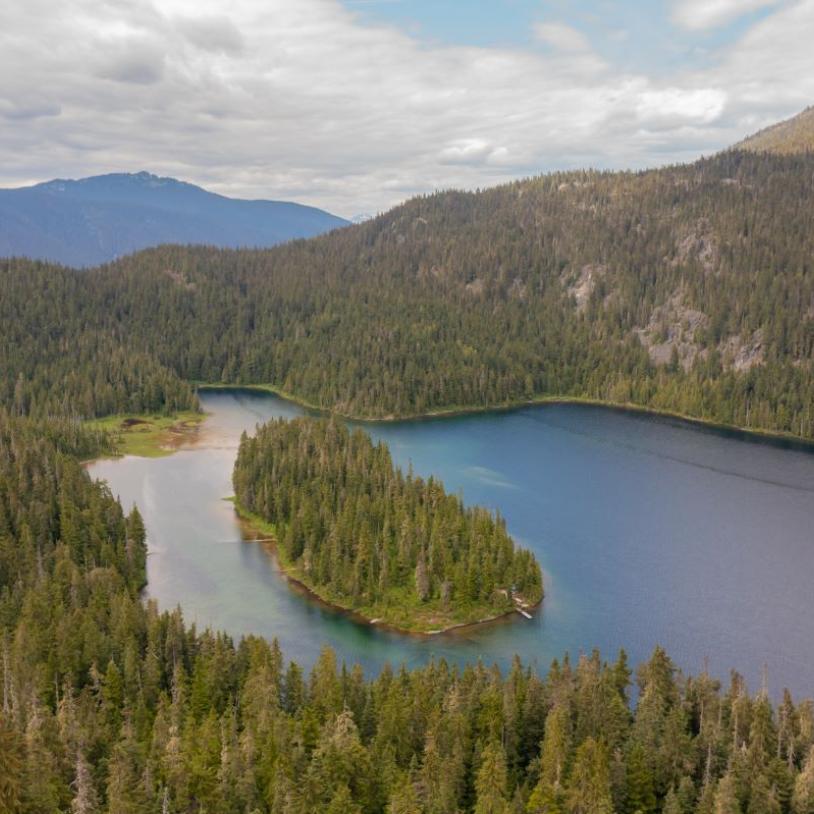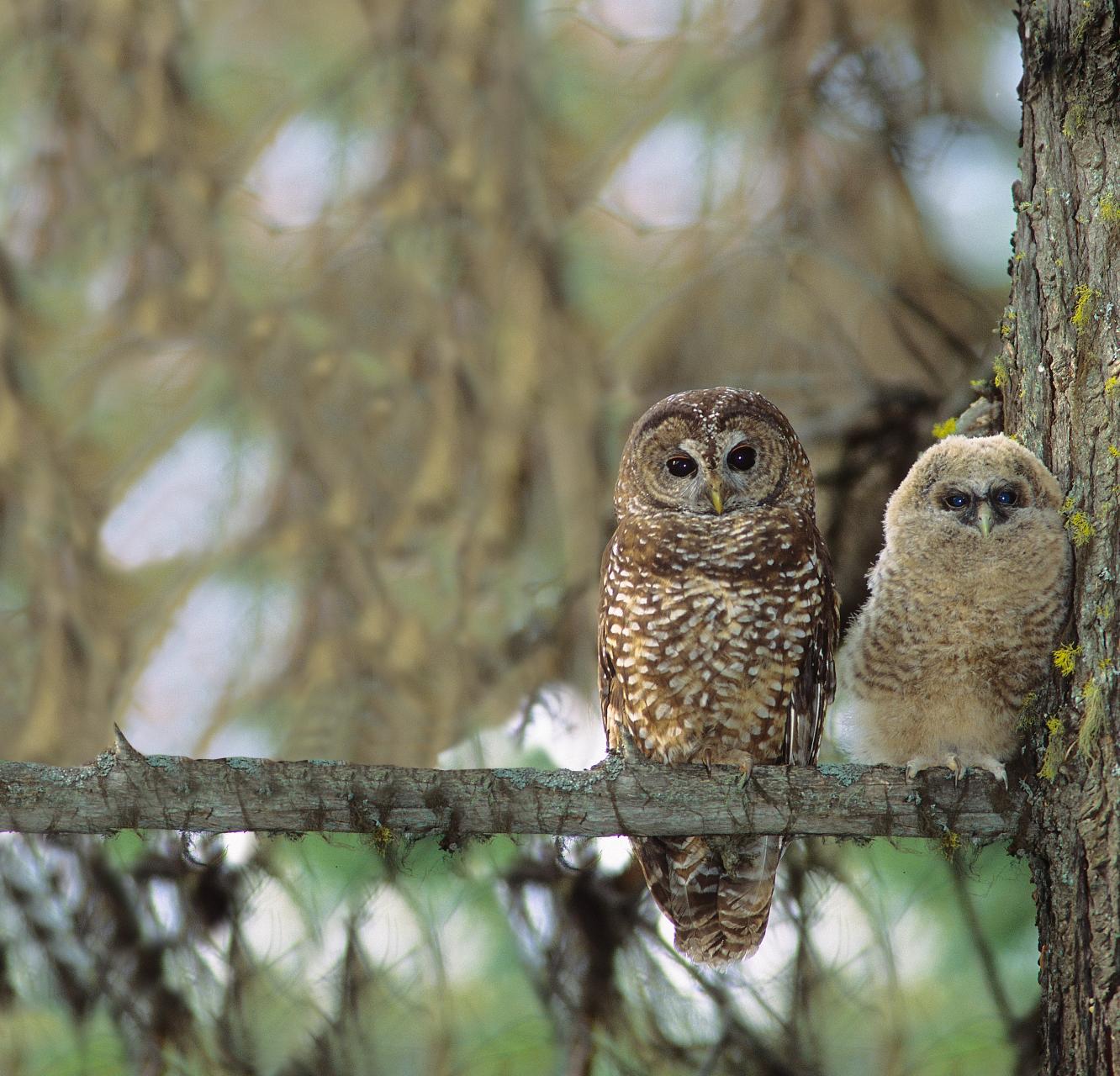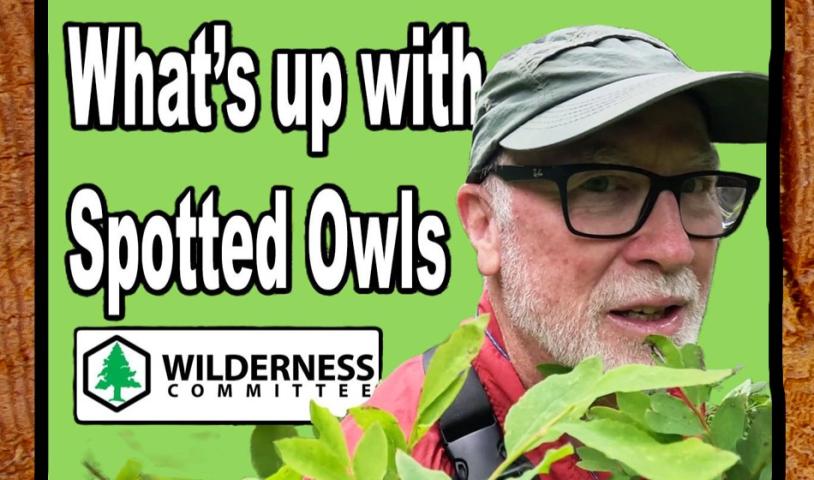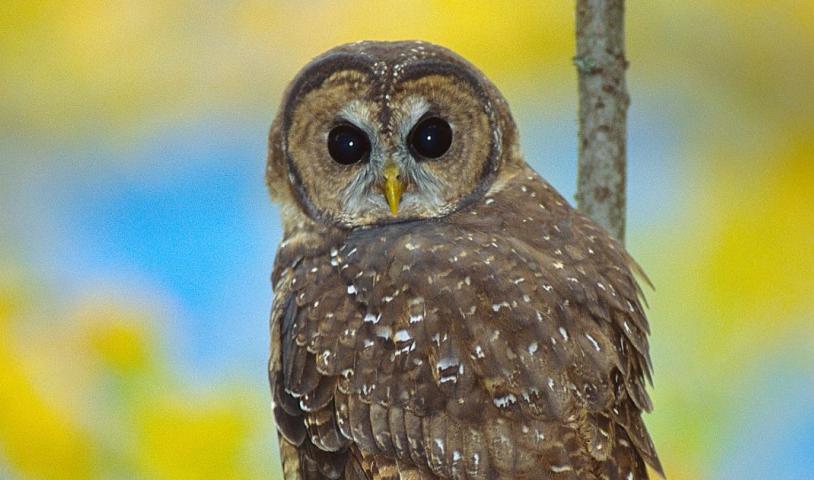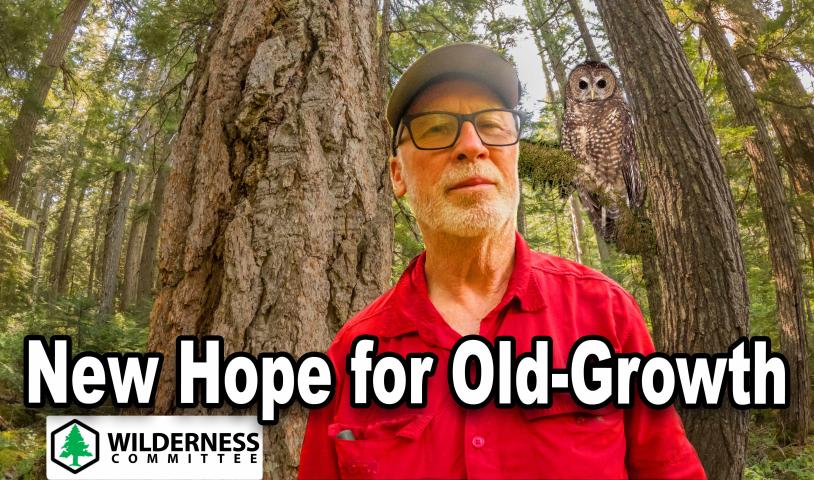BC’s Spotted Owl All But Extinct
Thursday, December 29, 2011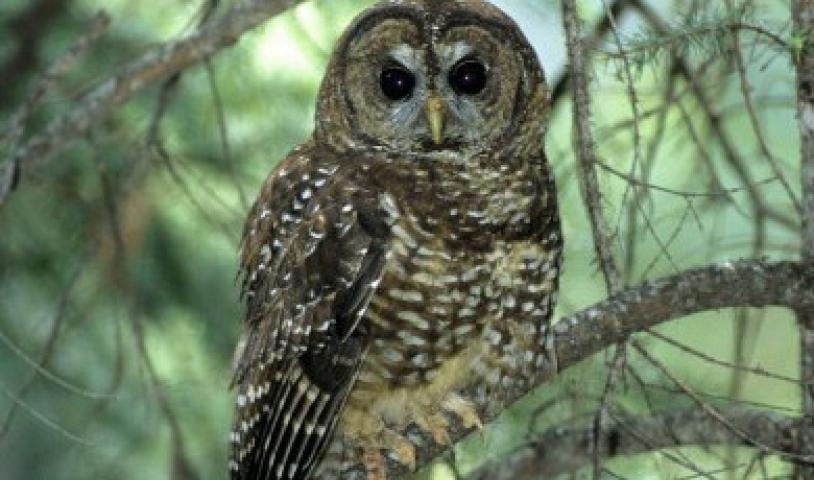
With just 12 owls left in the wild, MP says it may be necessary for the feds to step in
With the northern spotted owl reduced to around a dozen in British Columbia, the only place it exists in Canada, New Democrat MP Peter Julian is calling for the provincial government to do more to protect the habitat of the extremely endangered species.
Failing that, he says it may be time for the federal government to intervene using the federal Species at Risk Act to take emergency action.
“We’re going to be pushing the provincial government first off, but if the provincial government doesn’t act responsibly in this case the federal species at risk legislation does allow the federal government to intervene.”
Last week, Julian took a hike through groves of big trees in Post Creek near Chilliwack Lake, an area of old-growth forest previously protected as spotted owl habitat but now threatened by logging.
The B.C. government protected the forest in 2006 as spotted owl habitat, but then in early 2011 gave permission for 13 cut blocks—48 hectares—to be logged in the area.
“The provincial government put in place the protected zone, and then they expanded the protected zone and took out the protections, which makes no sense at all,” says Julian.
“It just seems to be as if the right hand doesn’t know what the left hand is doing within the provincial government. You’ve got the Ministry of Environment identifying the habitat that needs to be protected and putting in place the protected zone, and then you’ve got another ministry saying, ‘Well no, let’s permit logging.’
“That’s why we think that the provincial government can be shamed back into protecting the habitat for what’s left of the northern spotted owl population.”
The spotted owl is one of the most endangered species in Canada. Logging of the owl’s old-growth forest habitat is the main reason for the species’ steep decline—down from an estimated 500 pairs before the start of commercial logging in the 1880s.
In the last decade alone, the spotted owl population has crashed by 70 percent, leading government scientists to predict that the bird will become extinct in Canada in under 10 years unless more action is taken to protect the species and its habitat.
Conservation Efforts
The government says it aims to bring the population back to healthy numbers, and has started a captive breeding program with 17 birds. However, it’s a slow process, as the owls mate for life and produce just one to two chicks per year.
Government biologists have also been capturing barred owls—which compete with spotted owls for habitat—and moving them out of spotted owl habitat areas.
In 2011, the government increased the protected Wildlife Habitat Area to 226,700 hectares, up from about 200,000 hectares.
“As part of this process, some timber harvesting agreements in the area were renegotiated to prevent affected forest licensees from losing previously agreed to timber-cutting rights,” the Ministry of Forests, Lands and Natural Resource Operations explains in a statement.
The ministry argues that the area slated for logging in Post Creek is a “tiny fraction” of the total area set aside for management of the spotted owl.
“Bear in mind there has not been a confirmed owl sighting in this harvest area for more than 20 years despite survey efforts dating back to 1987,” reads the statement.
In the event that any owls are spotted, then harvesting operations must stop and the licensee will be required to retain certain types and amounts of trees for future spotted owl habitat.
“This solution balances protection of the spotted owl with pre-existing economic interests of the licensee,” the statement says, noting that a confirmed sighting of a spotted owl in a provincial park approximately five kilometres from the Post Creek Wildlife Habitat Area demonstrates that the recovery plan is working.
Habitat Vital
What worries Joe Foy, national campaign director for the Wilderness Committee, is that even if breeding the owls in captivity is a success, it will be for naught if there’s little habitat left when the birds are released back into the wild.
“We argue that a key part of this has got to be to protect the habitat—you’ve got to have the areas to release the owls back into,” he says.
More than 70 percent of the owl’s old growth habitat, which ranges from northern California to southwestern B.C., has been logged. The bird is listed as an endangered species in both Canada and the United States, with only a few thousand pairs remaining in all, according to the Suzuki Foundation.
Foy says it’s imperative that logging companies are moved out of the areas set aside for habitat, and that the B.C. government enact a stand-alone endangered species law. B.C. and Alberta are the only provinces in Canada with no endangered species legislation.
“They’ve granted logging companies the right to log in not all of these habitat areas, but certainly some of them. And up in Chilliwack Lake was the most egregious—13 cut blocks. I think they need to pull that back,” he says, noting that logging in the area is expected to begin in the spring of 2012.
Julian, who in his childhood spent a lot of time in Post Creek where his parents had a cabin, disputes the Ministry of Forests, Lands and Natural Resource Operations’ claim that the area has had no sightings of spotted owls in recent years.
“It’s simply false. In the watershed … and then to the lake which flows down through Post Creek, the northern spotted owl has been seen in the past few years—the Ministry of Environment has been very clear in that.”
Both Julian and Foy are hoping the logging plans for the area will be cancelled.
“The decision to bring in logging to generate at best a couple of weeks of work—I mean, there’s not any major significant economic benefit,” says Julian.
“But the cost is very clear to everybody. The cost is losing another species in our country. So we have to make sound, rational decisions that are based on the facts. The provincial government hasn’t done it in this case.”
Photo: The northern spotted owl has been reduced to around a dozen in British Columbia, the only place it exists in Canada. MP Peter Julian says if the provincial government doesn’t do more to protect the owl’s habitat, it may be time for the federal government to intervene using the federal Species at Risk Act to take emergency action. (Photo by Wayne Lynch)
